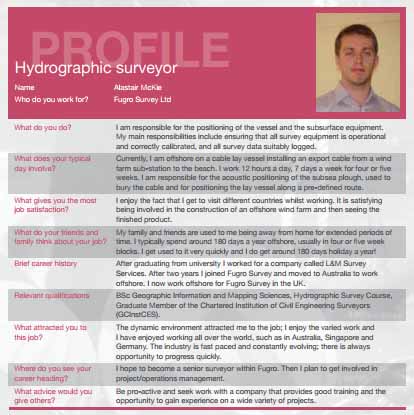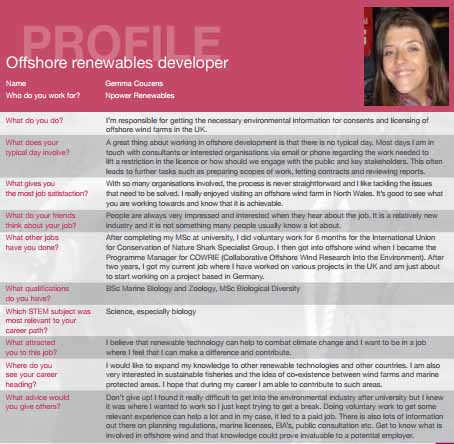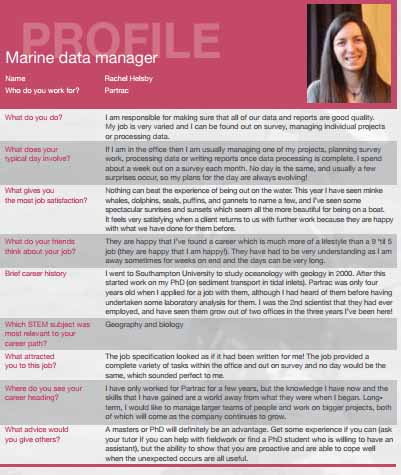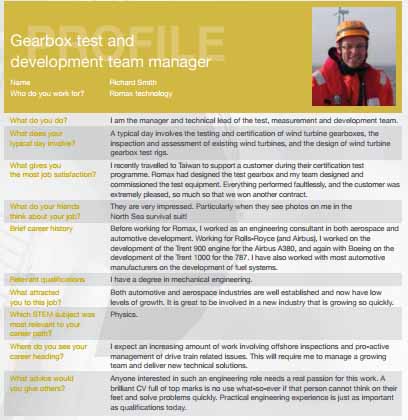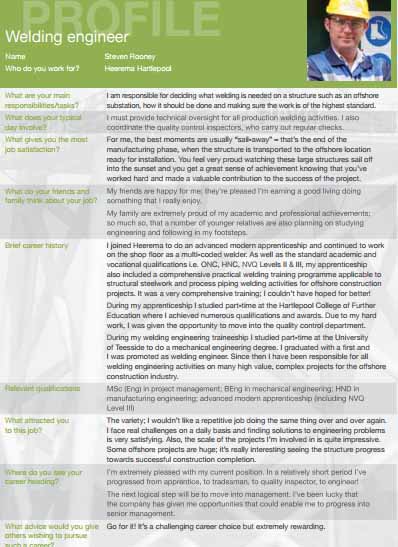During the week, Ryan, Owen, Reece and Sam went with the Norwegian guests to Maersk Offshore Training to interview the training officer about the job opportunities open in the renewable industry.
They also went to Catapault in Blyth who build and train operatives and technicians.
We also arranged to visit a small scale wind turbine manafucter in Staindrop, who build wind generators for farmers.
Maersk Training in Newcastle offers you a complete education programme for onshore and offshore training for a career in the Wind industry. The courses there are designed to:
- provide the essential mandatory skills required for you to work in the wind industry
- support gaining employment within the growing wind industry.
Their training is certified by the Global Wind Organisation (GWO) and it’s designed to address the lack of skills in the wind industry. It trains technicians in essential engineering skills, and certifies them for a your new career.
The wind industry is a fast growing industry
The wind iindustry is one of the few industries today that is growing and developing substantially in an adverse economic climate.
Maersk Training
Maersk Training train people to be prepared so that they can handle real life situations. they offer training sessions in;
The following modules:
- Health & safety in the wind turbine industry.
- Introduction to working with electrics and electronics in the wind turbine industry.
- Working at heights in the wind turbine industry.
- First aid in the wind turbine industry.
- Manual handling in the wind turbine industry.
- Fire awareness in the wind turbine industry.
- Working in confined spaces (medium risk) in the wind turbine industry.
- Marine safety and sea survival in the wind turbine industry.
- Employability in the wind turbine industry.
they also train technicians in
Fire fighting and maritime simulators
Offshore survival
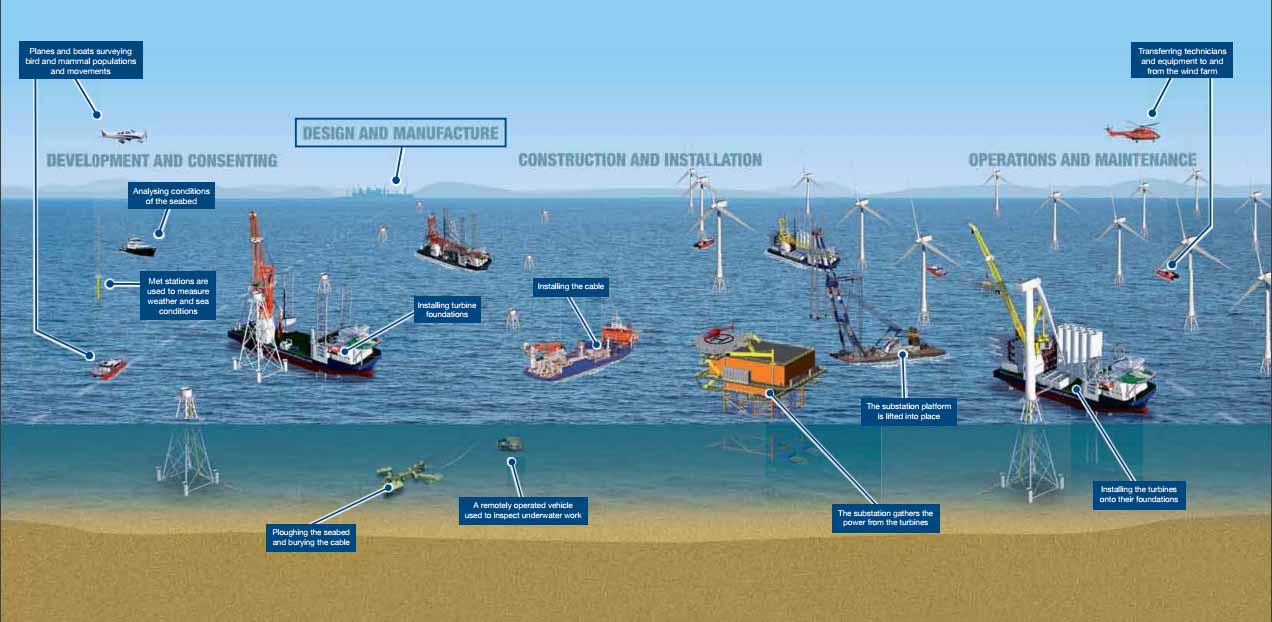
Europe leads the world in offshore wind, with almost half of the world’s offshore wind turbines generating electricity off the coastline of UK, Germany, Denmark
Wind energy is the key power generation technology being used in to address climate change and energy security issues faced today.
The technology is an attractive choice as it is clean, reliable and quick to install. The wind industry has grown from almost nothing 20 years ago to a multi-billion pound global industry, and it is still expanding fast, typically by around 20 percent every year.
So the question is: what are the potential career options in this sector? Its not just engineers and technicians, it includes logistics, sailors, stevedores, project managers, translators, accountants mathematicians. As part of our project we are going to look at everything related to jobs in the renewable energy business.
• How an offshore wind project is created and who is involved in the different steps;
• What career opportunities exist are and what people do in their jobs;
• Entry routes into the industry –
• Prospects for your career progression.
This careers guide is focused on science, technology, engineering and maths (STEM) related technical careers.
Some of the jobs are skilled crafts people and technicians; others are scientists, divers, pilots and engineers.
Entry into the industry has been varied – from school leavers to postdoctoral students. When we visited Maersk everyone had to be a qualified technician, but when we visitde Northumberland college the jobs were for school leavers.
What kind of qualifications do you need ? There are many roles that you can aim for as soon as you leave education – whether you are more vocationally focused or targeting a graduate level career. Other openings require hands-on experience that you can set your sights on as a longer-term goal. Craft and technician careers: Are you good with your hands? If so, you may want to focus on the craft and technician careers.
Many of the professional positions in companies will require you to hold a graduate or even a postgraduate qualification.
Core STEM degrees are respected by companies. Many universities offer renewable energy related modules and specialist qualifications.
What kind of working environment am I after? Looking for adventures off the coast? If you have the ambition to work at sea, there are many roles for you. It is an exciting environment and you will need good sea legs and be prepared to face the wind, waves and rough weather. Fitness and stamina will be important, especially in the more vocational roles, and working in extreme conditions means that being responsible and safety conscious are crucial parts of the job. Working in offshore wind energy while keeping your feet dry... Success offshore comes from doing as much as possible onshore – every activity completed on land saves time and money. This means that there are opportunities to work in the industry even if working at sea does not appeal. Manufacturing and operations sites are usually at ports, while much of the planning, management, R&D and engineering design can be anywhere.
3. What roles am I suited to? What skills do I need? There is no simple answer,
The diagram on the next page shows the life cycle of an offshore wind farm: • Development and consenting • Design and manufacture of wind turbines, foundations and electrical systems • Construction and installation • Operation and maintenance Each chapter will give you an overview of what these phases are and what types of jobs are involved.
Before an offshore wind farm can be built, significant preparation is needed, often over five years or more. This includes the engineering design of the wind farm based on the site conditions, assessing the impact it may have on the local environment, getting permission to construct the wind farm (known as consent) and selecting the wide range of companies who will be involved in the project’s implementation. What does it take to start a career in development and consenting? There are opportunities for both graduates and non-graduates within the development and consenting process. To give you an idea, these are just a selection of the roles required: oceanographers, hydrologists, geologists, marine biologists, environmental and marine scientists, and onsite technicians. Who does what in development and consenting? Development manager A wind farm developer leads the whole process, which is usually one of Europe’s large energy utilities. The development work is divided up into packages such as site identification, consenting, licensing, foundations, substations, cables or turbines. There are a number of development managers who will work for the project director. They will usually have an engineering or environmental science degree and will manage (for example) the delivery of specific environmental surveys, analyse the results and help to adapt the project in response. You can join the team as a project engineer with a relevant engineering degree (it could be mechanical, civil or electrical) and ideally a renewable energy qualification. From there, you can work your way up to be a package manager, coordinating the work in that area and finding the right company to supply the components to the project. Beyond this you can take on more and more responsibilies
Environmental surveys Developers need to understand the effect that a wind farm may have on the plants and animals that live in and around, or use, the wind farm area. Birds, fish, sea mammals and sea bed life are surveyed by specialist companies using a range of boats and aircraft. Data is collected on the distribution, density, diversity and number of different species. Onshore surveying work also has to take place to establish what impact cable laying and substations may have on the environment. It is also important to understand how people and companies will be affected by the wind farm. Generally, these roles will require environmental and ecology degrees, though some may have more specialist masters or PhD qualifications. Marine ornithologist Among the most important wildlife studies is the survey of bird populations and movements. It is often the first survey work to be done at a wind farm site because the work has to cover all seasons and needs to run for more than one year. Specialist companies can survey the birds from boats but aeroplanes have big advantages as they can cover large areas by taking high definition images for analysis. Bird surveying companies need graduates in marine biology, zoology and environmental science.
Marine ornithologist Among the most important wildlife studies is the survey of bird populations and movements. It is often the first survey work to be done at a wind farm site because the work has to cover all seasons and needs to run for more than one year. Specialist companies can survey the birds from boats but aeroplanes have big advantages as they can cover large areas by taking high definition images for analysis. Bird surveying companies need graduates in marine biology, zoology and environmental science.
Environmental consultant The data collected by surveyors is used by an environmental consultant to write the Environmental Impact Assessment or EIA. The EIA is an extremely important document which looks at the effects on nature conservation sites deemed to be of importance under European Union law. This work is largely office based and involves people with environmental degrees with good analytical and writing skills. There is often a variety of career paths within environmental consultancies with plenty of scope to take on more responsible roles involving looking after a number of projects.
Siemens, Vesta Catapult and Maersk employ a range of people in the wind energy industry, here are some profiles of the jobs they do
